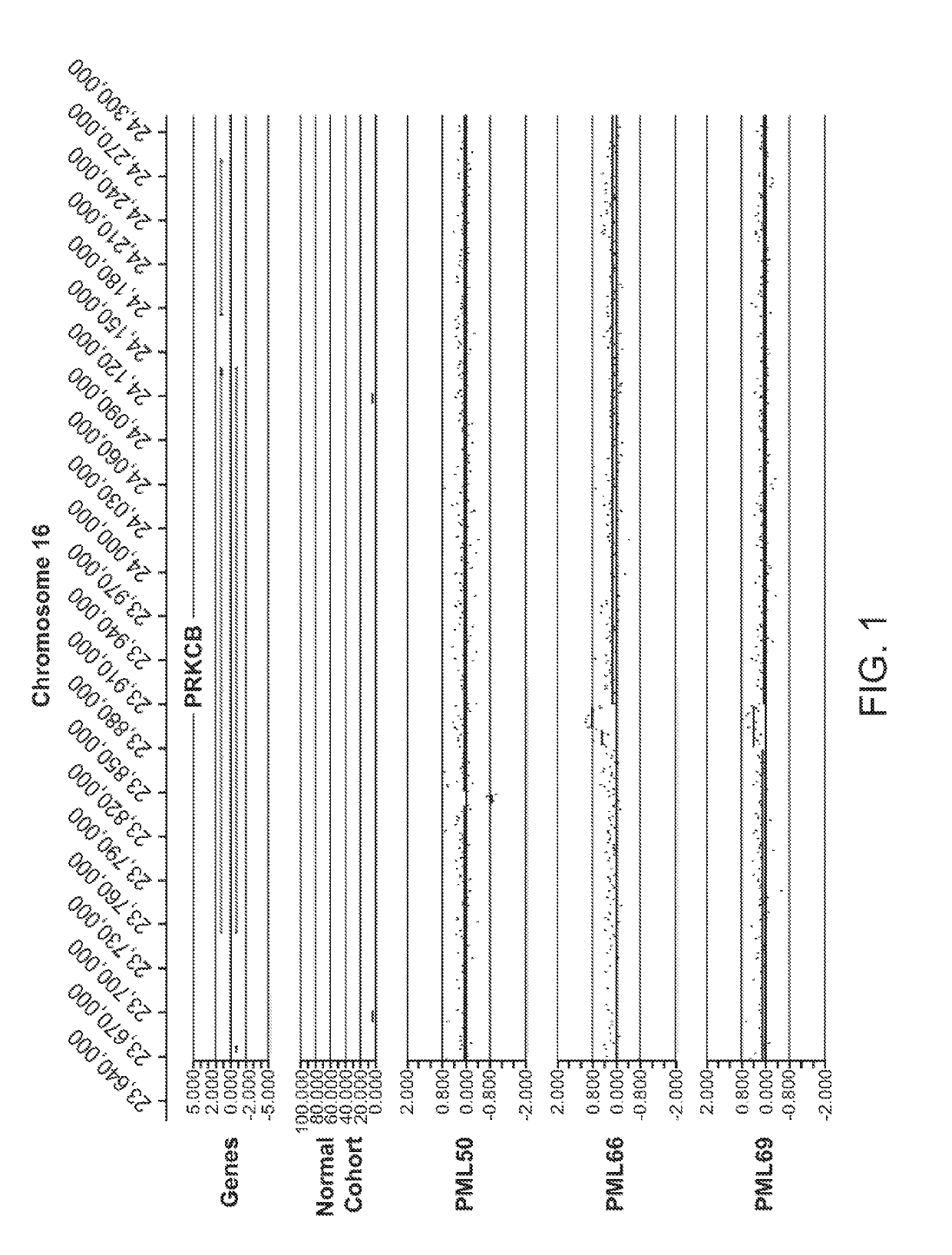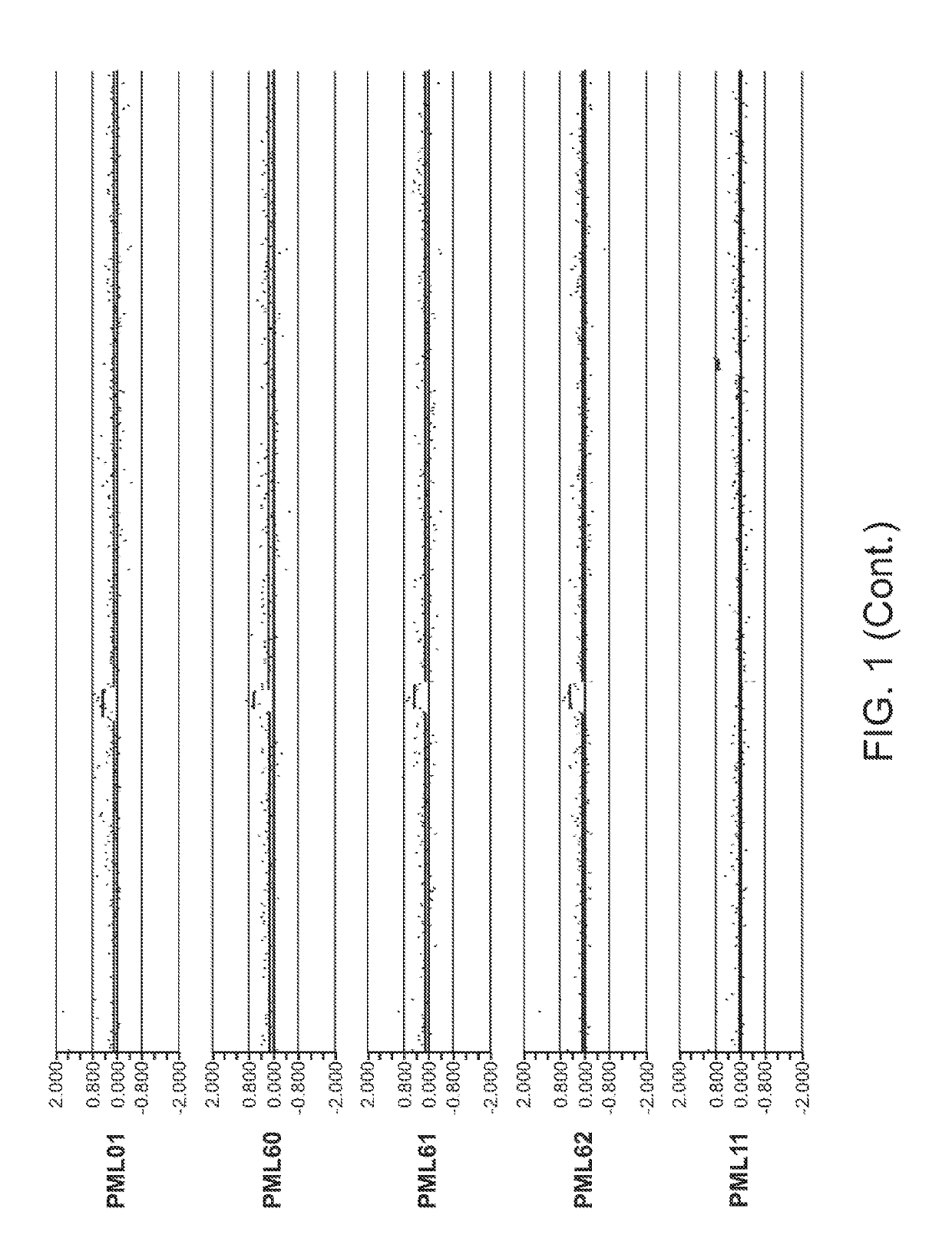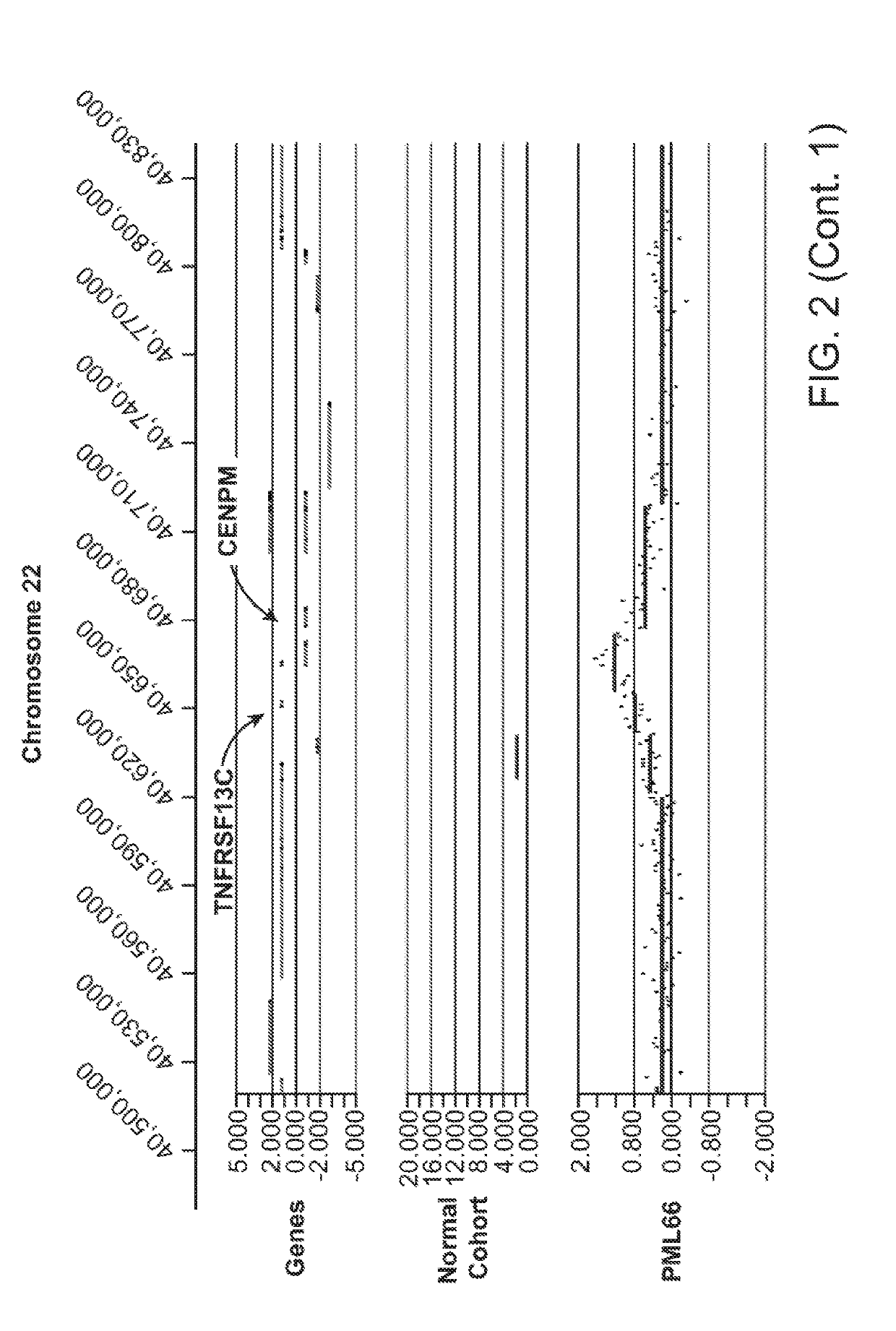Methods for assessing risk of developing a viral disease using a genetic test
a genetic test and risk assessment technology, applied in the field of genetic test risk assessment, can solve problems such as insufficientness, and achieve the effect of reducing viral load
- Summary
- Abstract
- Description
- Claims
- Application Information
AI Technical Summary
Benefits of technology
Problems solved by technology
Method used
Image
Examples
example 1
Experimental Approach
[0533]In the present study, a set of genes were identified, deleterious variants within which increase susceptibility to PML. The relevant genes were discovered on the basis of a combined CNV plus sequence analysis approach. Two sets of genes were compiled (see Table 6 and corresponding description):[0534]A. A set based on a detailed literature review of genes involved in the immune system and JC virus biology, along with genes described in the context of PML via case reports.[0535]B. A set based on the observation of rare CNVs within the PML cohort.
[0536]A non-redundant list of 419 genes was generated (see Table 6), which contains 245 curated from immune deficiency (immunodeficiency) reviews (Table 6, ‘Public_db’), 169 identified via rare CNVs using the methods described herein (Table 6, ‘PBio’), and 6 genes that were found using both methods (Table 6, ‘Both’). See Table 6 and description below for further information).
[0537]Using this set of 419 genes, it was ...
example 2
Copy Number Variant (CNV) Analysis
[0552]The data presented herein was generated on the basis of a comparison of copy number variants (CNVs) identified in 2 cohorts:[0553]1) 1,005 Normal individuals (Normal Variation Engine—NVE);[0554]2) 71 Progressive Multifocal Leukoencephalopathy (PML) cases along with 6 Human Immunodeficiency Virus (HIV) cases without a diagnosis of PML (in order to aid in distinguishing germline variants vs. acquired variants that result from HIV infection). Total cohort size=77.
Genomic DNA sample hybridization—NVE and PML, HIV Cohorts
[0555]Genomic DNA samples from individuals within the Normal cohort (NVE ‘test’ subjects, also referred to as ‘NVE cases’ in some tables herein) and from the PML, HIV cohort (PML, HIV ‘test’ subjects) were hybridized against a single, sex-matched reference individual. Reference DNA samples were labeled with Cy5 and test subject DNA samples were labeled with Cy3. After labeling, samples were combined and co-hybridized to Agilent 1M ...
example 3
Whole Exome Sequencing (WES) and Case Level Analysis
[0587]WES data was obtained on a total of 70 PML cases (non-PML HIV cases were not sequenced—they were used simply to help in the interpretation of complex CNVs observed in PML patients who also had HIV).
[0588]Variant annotation reports were further interrogated against the full set of genes detailed above. Synonymous variants and variants predicted to be modifiers (outside coding regions) were not considered. For all other variants, further filtering was performed so that only those predicted by at least one in silico prediction algorithm (e.g., Polyphen2, SIFT, MutationTaster) to be pathogenic were considered for further evaluation. Finally, only variants or variant combinations that would be expected to be present in 1% or less of the normal population were evaluated for case level analysis (Tables 7-10). Data from the Exome Aggregation Consortium (ExAC) was used to obtain ethnic-specific frequency data for variants under consid...
PUM
| Property | Measurement | Unit |
|---|---|---|
| nucleic acid hybridization | aaaaa | aaaaa |
Abstract
Description
Claims
Application Information
 Login to View More
Login to View More - R&D
- Intellectual Property
- Life Sciences
- Materials
- Tech Scout
- Unparalleled Data Quality
- Higher Quality Content
- 60% Fewer Hallucinations
Browse by: Latest US Patents, China's latest patents, Technical Efficacy Thesaurus, Application Domain, Technology Topic, Popular Technical Reports.
© 2025 PatSnap. All rights reserved.Legal|Privacy policy|Modern Slavery Act Transparency Statement|Sitemap|About US| Contact US: help@patsnap.com



